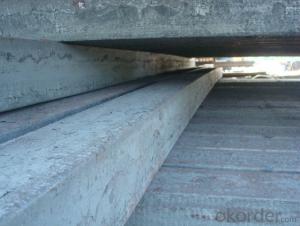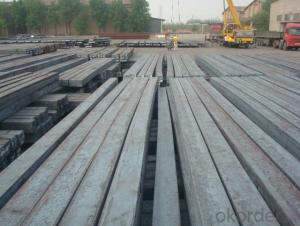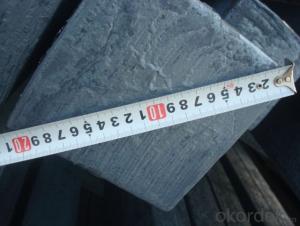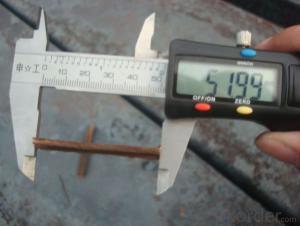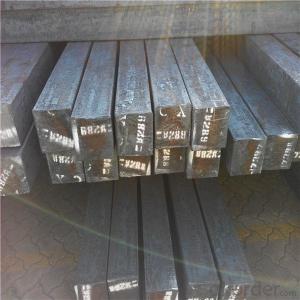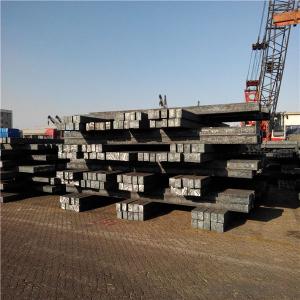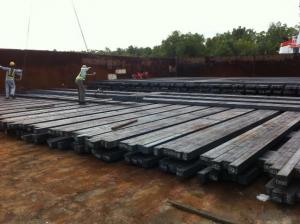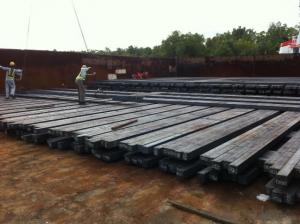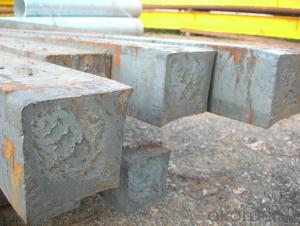chrome alloy square mild steel billets prime billet steel for building
- Loading Port:
- China main port
- Payment Terms:
- TT OR LC
- Min Order Qty:
- 25 m.t.
- Supply Capability:
- 800000 m.t./month
OKorder Service Pledge
OKorder Financial Service
You Might Also Like
square steel billets
Specifications of square steel billets
100 X 100
125 X 125
150 X 150
Physical Properties:
Description | As per IS 2830 | Shyam Billets |
Bend (max.) | 5 mm per meter | >= 5 mm per meter |
Carbon (max.) | 3mm per meter | >= 3 mm per meter |
Length | 3 mt - 13 mt | 3 mt - 9 mt |
Chemical Properties:
Ladle Analysis: | ||
Designation | Carbon | Manganese |
C15 | 0.12-0.18 | 0.30-0.60 |
C18 | 0.15-0.21 | 0.30-0.60 |
C20 | 0.17-0.23 | 0.30-0.60 |
C15 MMn | 0.12-0.18 | 0.60-1.00 |
C18 MMn | 0.15-0.21 | 0.60-1.00 |
C20 MMn | 0.17-0.23 | 0.60-1.00 |
C15 HMn | 0.12-0.18 | 1.00-1.50 |
C18 HMn | 0.15-0.21 | 1.00-1.50 |
C20 HMn | 0.17-0.23 | 1.00-1.50 |
Chemical Analysis: | |||
Grade | Sulphur | Phosphorous | Carbon Equivalent (CE)1 |
Max | Max | Max | |
A | 0.05 | 0.05 | 0.42 |
B | 0.045 | 0.045 | 0.41 |
C | 0.04 | 0.04 | 0.39 |
The Detail of steel billet
Name: | steel billets |
LENGTH: | 6 meter to 12 meter (+ 50mm) |
Size: | 100*100, 120*120, 150*150, 200*200 |
Grade: | 3SP,5SP,Q235,20MnSi. |
Shape: | Square, Round |
Technique: | Hot-Rolled |
Standard: | ASTM/GB |
BENDING | No more than 5mm in 1 meter |
ANGULAR TWIST | No more than 1 degree per meter and not more than 6 degree over 12 meter length. |
Chemical composition | C, Si, Mn, P, S, N, Cr |
Chemical Properties steel billet
Size | 60*60/90*90/100*100/120*120/150*150 |
Length | 6000mm-12000mm |
Standard | GB |
Applicaton | To produce bars or other applications |
Grade | Q195/Q235/Q275/3SP/5SP/20MnSi |
Packing terms | TT/LC |
Package | Mill's standard packing or as client's requirment |
Delivery time | Within 10-30 days after receiving the deposit or LC |
Chemical Composition steel billet
Standard | C(%) | Mn(%) | S(%) | P(%) | Si(%) |
Q195 | ≤0.12 | ≤0.50 | ≤0.040 | ≤0.035 | ≤0.30 |
Q235 | ≤0.20 | ≤1.40 | ≤0.045 | ≤0.045 | ≤0.35 |
Q275 | ≤0.22 | ≤1.50 | ≤0.045 | ≤0.045 | ≤0.35 |
20MnSi | 0.17-0.25 | 1.2-1.6 | ≤ 0.050 | ≤ 0.050 | 0.40-0.80 |
3SP | 0.14-0.22 | 0.40-0.85 | ≤ 0.050 | ≤ 0.040 | 0.05-0.15 |
5SP | 0.28-0.37 | 0.50-1.00 | ≤ 0.050 | ≤ 0.040 | 0.15-0.30 |
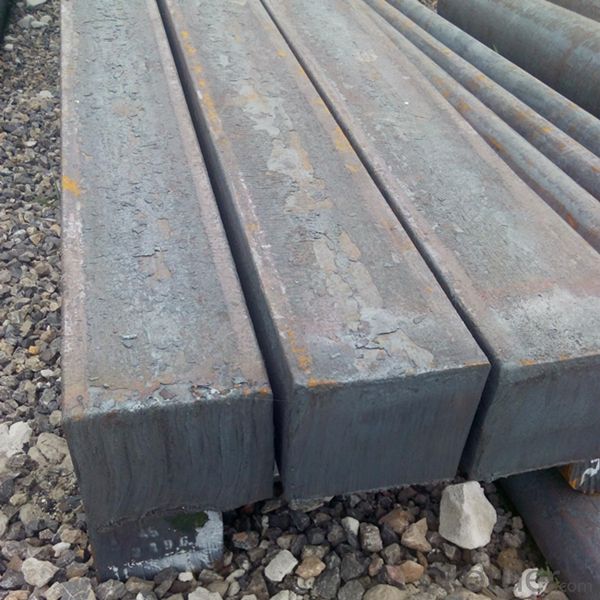
- Q: What are the potential applications of steel billets in the aerospace industry?
- Steel billets have several potential applications in the aerospace industry. They can be used for the manufacturing of various components such as engine parts, landing gear components, and structural elements. The high strength and durability of steel billets make them suitable for ensuring the structural integrity and safety of aircraft. Additionally, their excellent heat resistance properties make them ideal for applications in the aerospace industry where high temperatures are encountered, such as in jet engines.
- Q: Can steel billets be used in the production of agricultural equipment?
- Yes, steel billets can be used in the production of agricultural equipment. Steel billets are semi-finished products that are typically cast in a continuous casting process. They can be further processed into various shapes and sizes to manufacture agricultural equipment such as plows, cultivators, harrows, seeders, and other farm machinery. The use of steel billets in agricultural equipment offers several advantages. Steel is known for its strength, durability, and resistance to wear and tear, making it suitable for heavy-duty applications in the agricultural industry. Additionally, steel can withstand harsh environmental conditions, ensuring that the equipment remains reliable and functional even in challenging farming environments. Moreover, steel can be easily molded and fabricated into different forms, allowing for the customization of agricultural equipment to meet specific requirements. Overall, the use of steel billets in the production of agricultural equipment contributes to the efficiency, productivity, and longevity of farming operations.
- Q: How do steel billets contribute to the fire resistance of a structure?
- Steel billets primarily contribute to the fire resistance of a structure by providing structural stability and integrity during a fire. The high melting point of steel, combined with its strength and durability, allows it to withstand extreme temperatures for a longer period of time compared to other building materials. This helps to slow down the spread of fire and prevents structural collapse, giving occupants more time to evacuate and firefighters more time to control the blaze.
- Q: What are the different surface treatments for improved dimensional accuracy in steel billets?
- To enhance dimensional accuracy in steel billets, various surface treatments can be utilized. These treatments have the objectives of reducing surface imperfections, improving surface finish, and minimizing dimensional variations. Some commonly employed surface treatments for achieving improved dimensional accuracy in steel billets include: 1. Shot blasting: By forcefully propelling abrasive particles onto the billet's surface, shot blasting effectively eliminates dirt, scale, and surface contaminants. This results in a smoother and cleaner surface, thereby eliminating potential dimensional variations caused by surface irregularities. 2. Peeling: In this machining process, a cutting tool is used to remove a thin layer of material from the billet's surface. Peeling helps eliminate surface defects and imperfections, leading to enhanced dimensional accuracy. Additionally, peeling can improve the billet's surface finish. 3. Grinding: Material removal from the billet's surface is achieved through the use of an abrasive wheel or belt in the grinding process. This treatment effectively eliminates surface irregularities like high spots or scratches, contributing to improved dimensional accuracy. Furthermore, grinding provides a smoother and more uniform surface finish. 4. Turning: Using a cutting tool, turning involves the removal of material from the billet's surface. This treatment enables the achievement of precise dimensions and surface finish. Additionally, turning can enhance the billet's concentricity and straightness. 5. Polishing: Polishing entails the use of abrasive materials or compounds to create a smooth and reflective surface on the billet. By eliminating surface imperfections such as scratches or blemishes, polishing contributes to improved dimensional accuracy and surface finish. It is important to consider that the choice of surface treatment may vary depending on specific requirements and desired outcomes. Manufacturers often employ a combination of these treatments to attain optimal dimensional accuracy in steel billets.
- Q: Can steel billets be used for structural applications?
- Yes, steel billets can be used for structural applications. Steel billets are semi-finished products commonly used in the manufacturing of various structural components such as beams, columns, and rods. These billets can be further processed through rolling or forging to create the desired shapes and sizes required for structural applications. The high strength and durability of steel make it a popular choice for constructing buildings, bridges, and other infrastructure projects.
- Q: What are the different methods of steel billet surface treatment?
- There are several methods of steel billet surface treatment that are commonly used in the industry. These methods aim to enhance the surface properties of the steel billets, such as improving corrosion resistance, increasing hardness, and improving aesthetics. Some of the most common methods of steel billet surface treatment are: 1. Pickling and Passivation: This process involves the removal of impurities and oxide layers from the steel surface using acid solutions. After pickling, the steel is passivated to create a protective layer that prevents future corrosion. 2. Shot Blasting: Shot blasting is a mechanical surface treatment method that involves the use of high-speed steel shots or grits to bombard the surface of the billets. This process removes scale, rust, and other contaminants, resulting in a clean and uniform surface. 3. Hot-Dip Galvanizing: In this process, the steel billets are immersed in a bath of molten zinc, which forms a protective coating on the surface. This method provides excellent corrosion protection, making it suitable for outdoor applications. 4. Electroplating: Electroplating involves the deposition of a thin layer of metal, such as chrome or nickel, onto the steel surface using an electric current. This method improves the appearance of the steel, enhances corrosion resistance, and can also provide better wear resistance. 5. Powder Coating: Powder coating is a popular method of surface treatment, especially for aesthetic purposes. It involves applying a dry powder onto the steel surface and then curing it through heat, resulting in a durable and attractive finish. 6. Painting: Painting is another common method used for surface treatment. The steel surface is first cleaned and primed before applying a suitable paint system. This method not only enhances the appearance but also provides protection against corrosion and environmental factors. 7. Nitriding: Nitriding is a heat treatment process that involves the diffusion of nitrogen into the steel surface. This method improves the hardness, wear resistance, and fatigue strength of the billets. These are just a few of the various methods of steel billet surface treatment available. The choice of method depends on the specific requirements of the application, desired properties, and budget considerations.
- Q: What is the shelf life of a steel billet?
- The durability of a steel billet can vary based on various factors. In order to prevent corrosion and uphold their quality, steel billets are typically stored in controlled environments. With proper storage, steel billets can remain usable for several years. However, it is essential to acknowledge that the shelf life can be influenced by factors such as humidity levels, exposure to moisture or chemicals, and the specific type of steel employed. Consequently, it is crucial to adhere to the storage guidelines provided by manufacturers to guarantee an extended shelf life for steel billets. Regular inspections and maintenance can also aid in identifying any potential issues that may impact the durability of the billets.
- Q: What are the typical dimensions and weight of steel billets?
- The typical dimensions and weight of steel billets can vary depending on the specific requirements of the industry or application. However, in general, steel billets are rectangular in shape and have a length that is several times its width and height. The dimensions of steel billets commonly range from around 100mm to 200mm in width, 100mm to 300mm in height, and 3,000mm to 6,000mm in length. These dimensions can vary based on the intended use, as different industries may have specific requirements for their steel billets. Regarding weight, steel billets typically range from a few hundred kilograms to several metric tons. The weight depends on various factors, including the dimensions, density, and grade of steel used. It is important to note that steel billets can be customized to meet specific weight requirements, especially in industries such as construction, automotive, and manufacturing, where precise weight specifications are necessary. Overall, the dimensions and weight of steel billets can vary based on industry needs, but they generally adhere to rectangular shapes and can range from hundreds of kilograms to several metric tons.
- Q: What are the main factors affecting the machinability of steel billets?
- Several key factors influence the machinability of steel billets, which refers to the ease with which they can be cut and shaped by machining processes. These factors encompass the composition of the steel, its microstructure, the presence of impurities or inclusions, and the mechanical properties of the material. The machinability of steel is significantly impacted by its composition. Elements like carbon, manganese, sulfur, and phosphorus play a crucial role in determining the cutting performance. For example, a higher carbon content can increase hardness, thereby making the steel more challenging to machine. Conversely, manganese can enhance machinability by promoting the formation of a favorable microstructure. The microstructure of the steel, influenced by factors such as heat treatment and alloying elements, also affects machinability. Fine-grained steels with a homogeneous microstructure are generally easier to machine compared to coarse-grained ones. Additionally, the inclusion of alloying elements like chromium or molybdenum can enhance machinability by increasing the material's hardness and wear resistance. Machinability can be negatively affected by impurities or inclusions present in the steel, such as non-metallic particles or oxides. These impurities can result in tool wear, surface defects, and inadequate chip formation during machining. Therefore, minimizing the level of impurities in the steel through meticulous production and refining processes is crucial. Moreover, the mechanical properties of the steel, including hardness, strength, and ductility, impact machinability. High-strength steels tend to be more challenging to machine due to their increased hardness, necessitating greater cutting force. Ductility also plays a vital role as it affects the steel's ability to form chips during machining. Striking a balance between hardness and ductility is desirable for optimal machinability. In conclusion, the machinability of steel billets is influenced by various factors encompassing composition, microstructure, impurities, and mechanical properties. It is imperative to comprehend and control these factors to ensure efficient and effective machining processes.
- Q: What are the potential risks associated with steel billet production?
- There are several potential risks associated with steel billet production. Firstly, the production process involves the use of high temperatures and molten metal, which can pose a risk of burns and fire hazards. Operators and workers must exercise caution while handling the equipment and ensure proper safety protocols are followed to prevent accidents. Secondly, the raw materials used in steel billet production, such as iron ore and coal, can contain impurities that may release harmful gases and particulate matter during the production process. These emissions can pose health risks to workers and nearby communities if not properly controlled and mitigated. Additionally, the machinery and equipment used in steel billet production, including furnaces and rolling mills, can pose mechanical hazards if not properly maintained or operated. Accidents such as equipment malfunctions or material failures can result in injuries to workers and damage to the production facility. Furthermore, the steel industry is energy-intensive, requiring significant amounts of electricity and fossil fuels for the production process. This reliance on non-renewable energy sources contributes to greenhouse gas emissions and climate change. Efforts should be made to minimize the environmental impact through energy-efficient practices and the adoption of cleaner technologies. Lastly, the transportation of steel billets from the production facility to the next stage in the supply chain can present risks. Handling and moving heavy steel billets require proper lifting and securing techniques to prevent accidents and injuries during loading, unloading, and transportation. To mitigate these risks, it is crucial for steel billet producers to prioritize safety measures, including regular equipment inspections, proper training for workers, implementation of environmental controls, adherence to safety regulations, and continuous improvement in operational practices.
Send your message to us
chrome alloy square mild steel billets prime billet steel for building
- Loading Port:
- China main port
- Payment Terms:
- TT OR LC
- Min Order Qty:
- 25 m.t.
- Supply Capability:
- 800000 m.t./month
OKorder Service Pledge
OKorder Financial Service
Similar products
Hot products
Hot Searches
Related keywords







